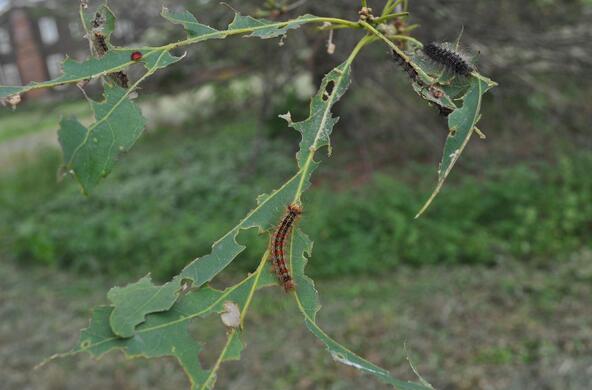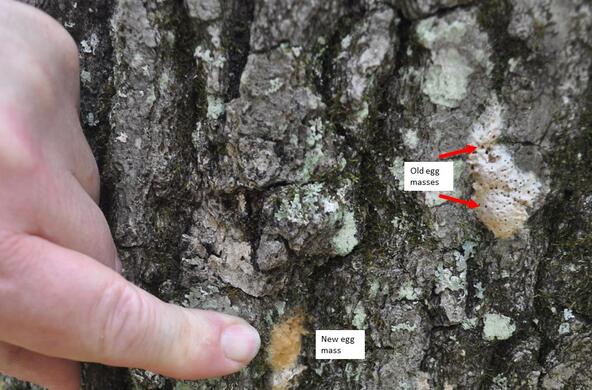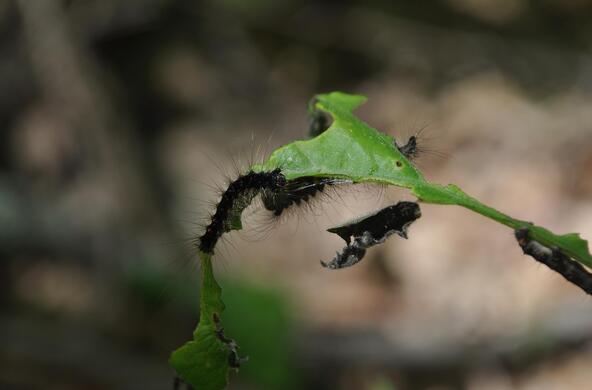Status: Past Project
Spongy moth outbreaks tend to occur on a roughly 10-year cycle, although the outbreaks have been reduced because of a fungal disease that affects the caterpillars. When spongy moths defoliate a forest canopy, the nitrogen in the foliage is turned into insect biomass, frass (insect feces), or is lost as bits of green litterfall, and is consequently unavailable for the trees to resorb in the autumn (Lovett et al 2002).
We have found that much of the nitrogen in frass dropped to the forest floor is quickly taken up by soil microbes and perhaps directly incorporated into the soil, making it unavailable for plant uptake (Lovett and Ruesink 1995, Christenson et al 2002). This would suggest that there should also be little leaching of nitrogen after an outbreak, but some nitrogen leaching may occur in forests that have thin soils or an overabundance of nitrogen (Lovett et al 2002).
Some data related to this project may be found in these data collections:




